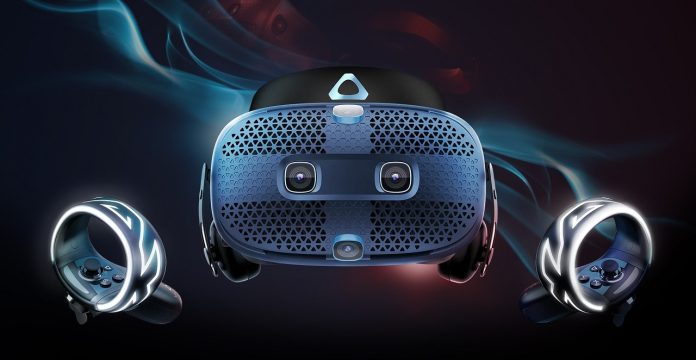Table of Contents:
While the Vive was a collaboration between Valve and HTC, resulting in a headset integrated with Steam, Cosmos offers other VR experiences.
The Vive Cosmos headset takes the development of HTC consumer headsets in a slightly different direction. Three and a half years after the launch of the original Vive, Cosmos finds itself in a rather strange competitive environment, where it must simultaneously contend with a longtime rival in the budget sector and with its former ally at the premium level. Read on to find out how things are going.
Before we get started, you may recall that we initially put our review on hold as we waited for a response from HTC regarding the light sensitivity of the headset. The results of this investigation will be below.
Vive Cosmos review.
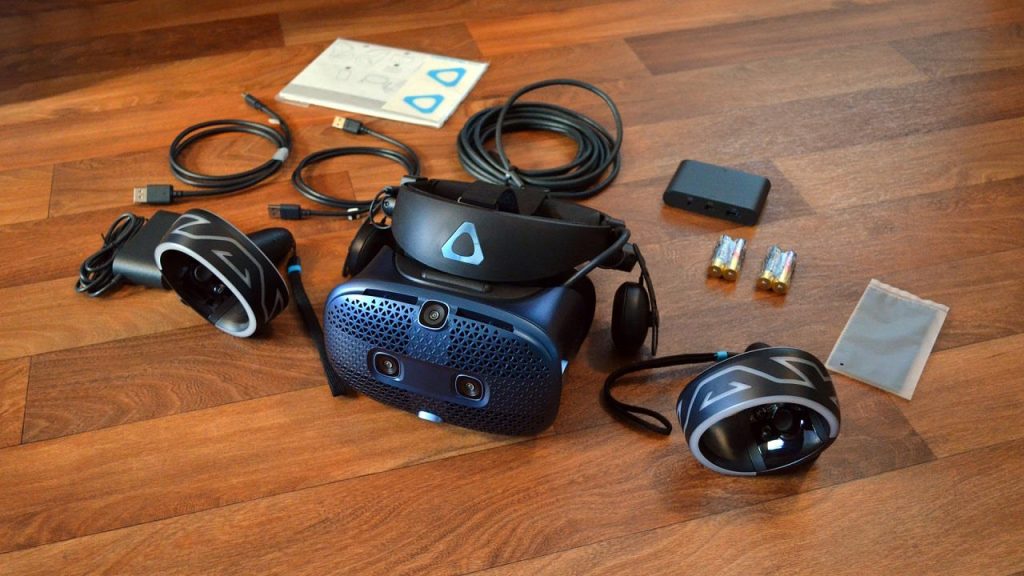
While the original Vive was the result of a collaboration between Valve and HTC that resulted in the headset being deeply integrated with both Steam and the SteamVR (Lighthouse) tracking system, Cosmos offers several new ways to consume content that HTC hopes to separate its VR- business from Valve and create your own unique offering. Unfortunately, the remnants of what was once laid down now make it difficult to do so.
The cost of Vive Cosmos.
In terms of price, the Cosmos is $700 and matches two of its main competitors: the $400 budget Rift S and the $1,000 premium Index (or $750 for those who already own SteamVR Tracking base stations). For the Cosmos to be in this middle ground, it should ideally do most things better than the Rift S, even if it can’t quite match the more expensive Valve Index.
Vive Cosmos design.
However, starting with the design, the Cosmos offers little to justify its $700 price tag. While overall the design is fine, there are a few elements that make the Cosmos look a bit cheap. External clip-on headphones with bare wires do not go well with a flimsy headband. The removable face pad feels so fragile that it feels like it’s about to break every time it’s removed. The forehead rest (which needs to be detached to remove the headphones) feels like it will break when detached, and is also difficult to put back in place later due to the 13 separate plastic clasps on the intricate curved surface that secure it.
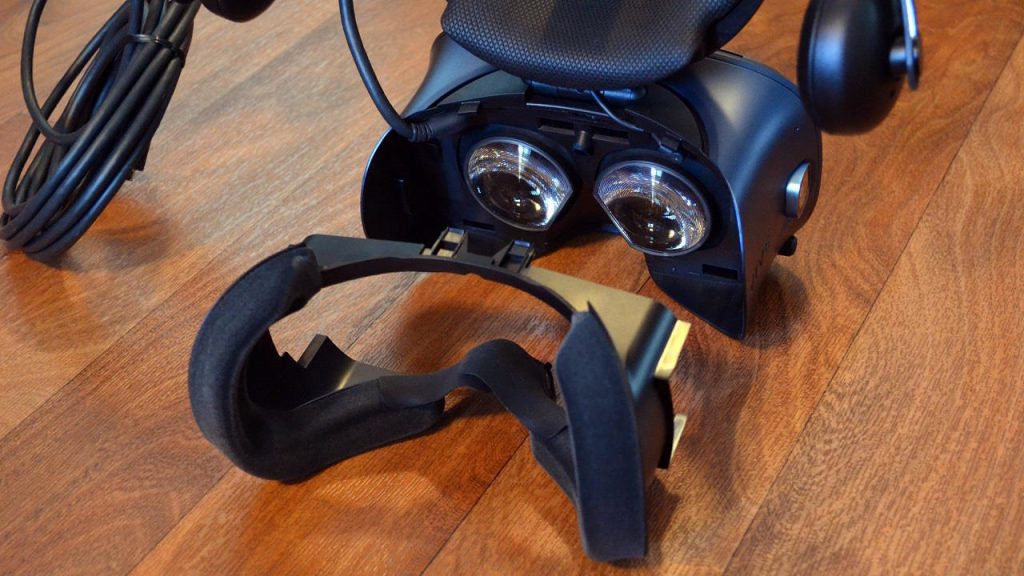
However, the Cosmos, like the Vive Pro, is excellent at blocking out light in the nasal cavity – better than any headset in the industry – and the overall body is excellent at blocking out all light. The Cosmos also features a pop-up visor, which is a very welcome addition, eliminating the need to completely remove and then re-attach the headset if you need a momentary glimpse into the real world.
Vive Cosmos head mount.
Unfortunately, the Halo-style Cosmos headmount offers two mutually exclusive options: comfort or image clarity. Correct eye position is critical for the best visual clarity. But, at least for us, this ideal eye position is not ideal for comfort. After 30 minutes in the headset, the pressure on the forehead becomes very noticeable. Unfortunately, moving the headset to a more comfortable position means that the eyes move out of the sweet spot of the lenses – visual perception is noticeably worse.
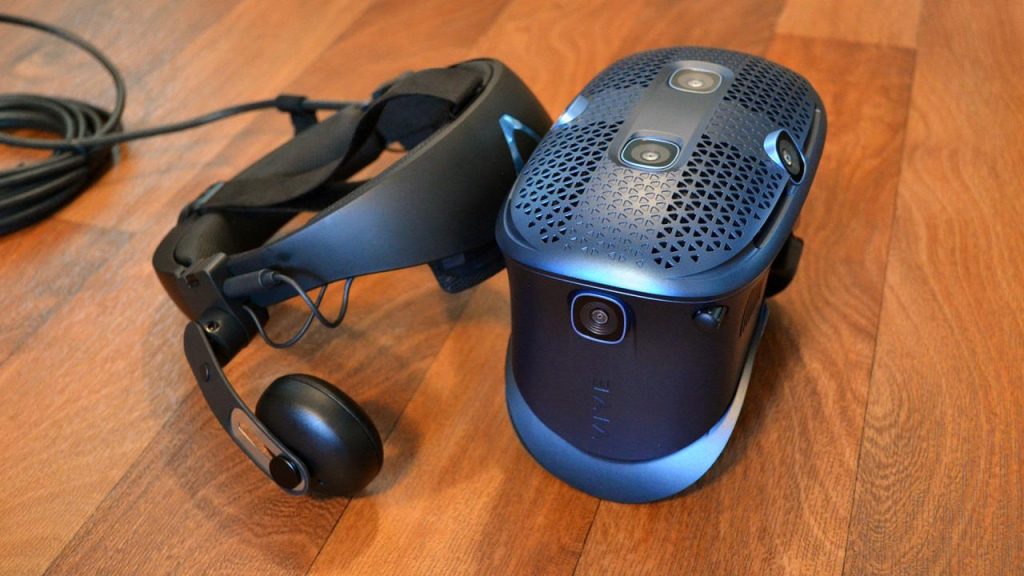
And while the Rift S has the same “comfort or clarity” issue, the Cosmos’ weight and heavy front design exacerbate the problem even further. Some of us have felt a bit of back pain between our shoulders after an hour and a half session with Cosmos, something that hasn’t happened with other headsets. Needless to say, if you don’t like the Halo-style head mounts, then you probably won’t like the Cosmos either.
The Vive Cosmos viewing angle.
While the Cosmos struggles with build quality and ergonomics, there’s one area where it does quite well and that’s visuals. HTC lists the headset’s 110-degree field of view, the same as the original Vive and Vive Pro (which seems to be true). In this case, Rift S loses to Cosmos in this serious indicator. And Index ends up killing them both.
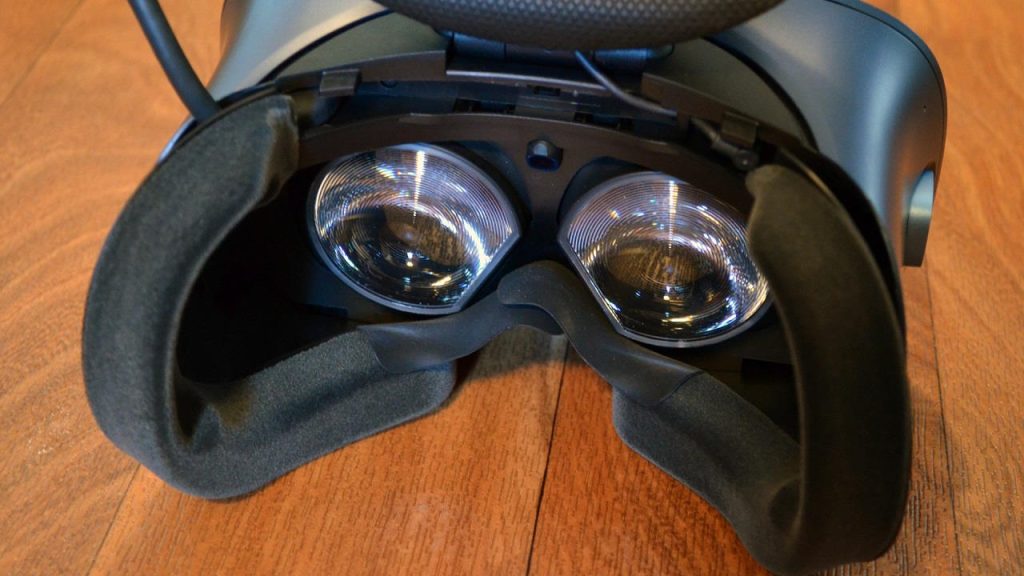
Screen resolution and optics of Vive Cosmos.
The slightly higher resolution per eye compared to the Index and slightly smaller field of view reflect what the specifications on paper suggest: 1440×1700 per eye with a slightly smaller field of view – Index’s resolution of 1440×1600 – results in slightly higher pixel density and a slight advantage in reducing the Screen-door effect of Cosmos. Ultimately, the Cosmos, Index, and Rift S are effectively in the same class when it comes to pixel density and the strength of the Screen-door effect.
Unfortunately, like all HTC headsets before it, Cosmos lenses have a frustratingly small area of maximum image clarity. If your eyes aren’t in perfect alignment with the lenses (or if you move your eyes to look around the field of view without turning your head), you’ll see nasty blurring in the periphery. This further exacerbates the problem with Cosmos ergonomics – if the ideal position of the eyes in relation to the lenses is not matched by a comfortable fit, you will have problems with comfort during long sessions.
When it comes to flare and God Rays, Cosmos Fresnel lenses show less flare compared to Vive and Vive Pro, and similar to Rift S. Meanwhile, Index’s dual-element optics have a similar God Ray effect but more flare. As always, God Rays and flare only occur in high contrast visuals.
While the difference isn’t big enough for us to personally claim we’re seeing, the Cosmos’ 90Hz displays give motion a little more fluidity compared to the 80Hz Rift S. However, the Index at 120Hz (or even 144Hz if the computer has enough power) leaves both headsets far behind.
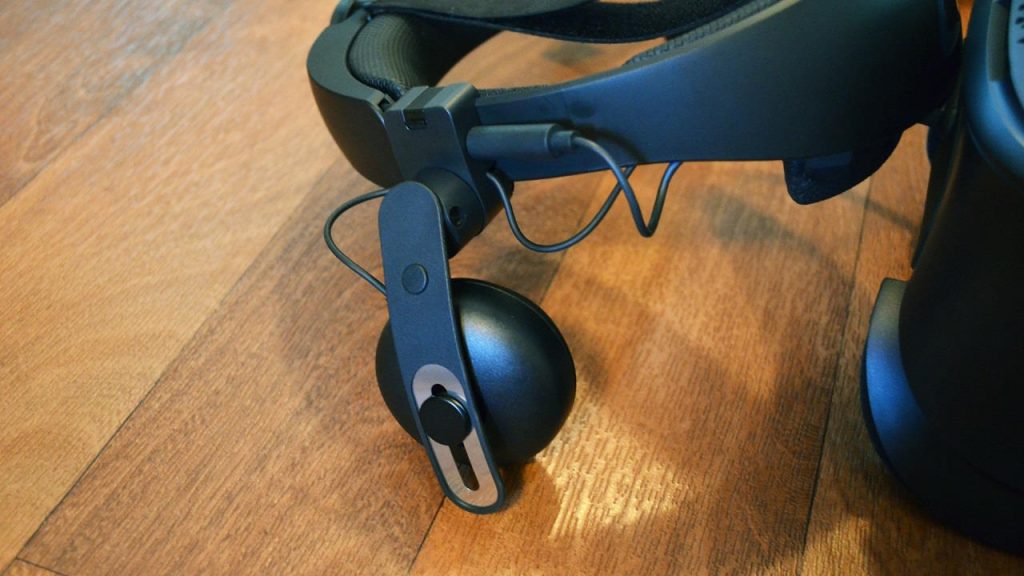
Sound quality in Vive Cosmos.
The built-in Cosmos headphones sound good, although the spring-back design made us appreciate the Rift S and Index’s external-ear solutions more. Unfortunately, we didn’t like the spring-loaded design, because the Cosmos’ fragile headband sometimes flexes instead of snapping into place as it should. You have to take the headphones by the stand and set them to the desired position with your hands, although they should fall into place on their own.
Luckily, if you want to use your own headphones to solve this problem, you can remove the Cosmos without tools and then plug in your own via the 3.5mm headphone jack.
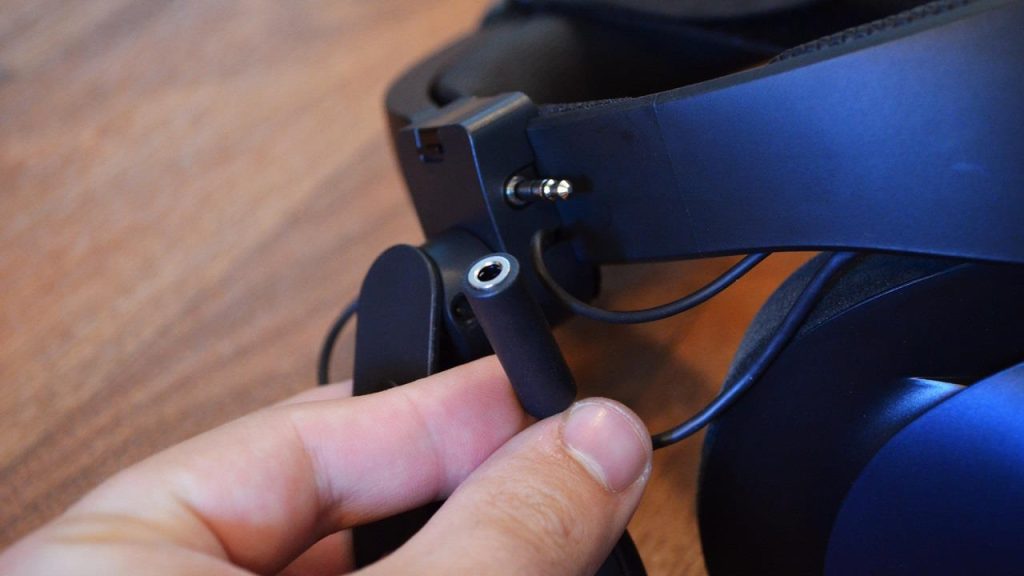
Vive Cosmos Tracking.
Let’s move on to tracking. Cosmos is moving from SteamVR Tracking, the gold standard for room-scale tracking, to its own tracking system, which uses six cameras on the headset to track the position of the headset and its controllers. While SteamVR tracking requires external beacons that can be fiddly to set up, Cosmos’ inside-out tracking is completely offline and provides a much easier Plug and Play setup. Unfortunately, this comes at the cost of a slight decrease in tracking accuracy.
And while Rift S’s inside-out tracking looks pretty good even against SteamVR Tracking, except for a few specific cases, Cosmos struggles to achieve the same level of accuracy, but only in a very well-lit room.
You may have noticed that we initially delayed our Cosmos review because the headset complained so aggressively about poor lighting that we thought it might be faulty. Initially, we couldn’t get Cosmos to work at all after sunset, even when every other inside-out tracking headset we had on hand worked without problems. After we figured out the extent of the problem, HTC released a patch that made the headset more tolerant of low light conditions.
And although the initial setting was certainly too aggressive and did not perceive anything other than a very well-lit room. The reduction in requirements resulted in reduced accuracy and more headset judder than desired. These small fluctuations (which represent the limit of headset tracking accuracy) do not interfere with perception, but may cause slight discomfort.
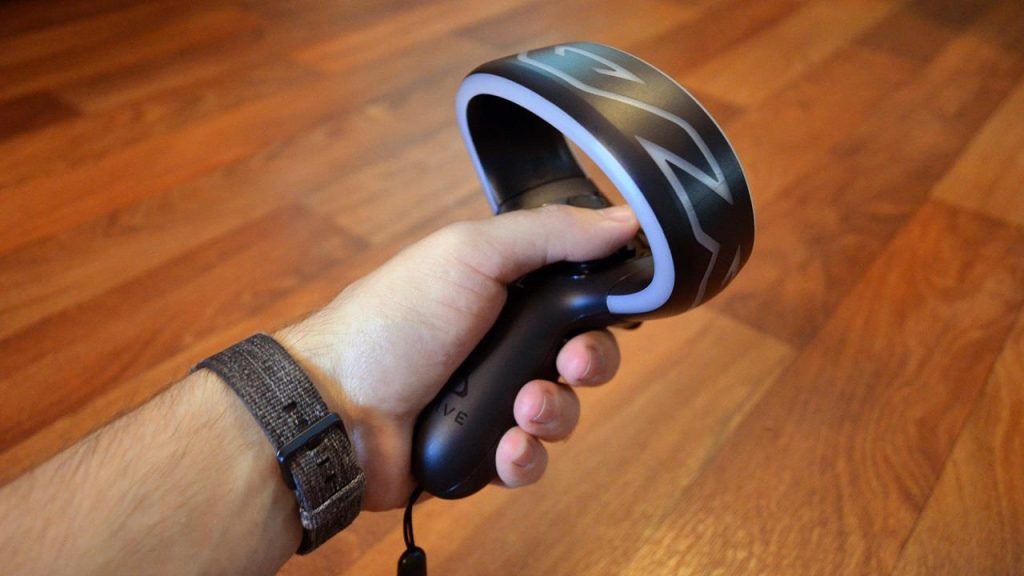
At least under normal playspace lighting (no overhead lighting), Cosmos tracking performance is somewhere between PSVR and Rift S (leaning closer to Rift S). It’s still “good enough” for most purposes, although you’ll get frustrated if you’re trying to do some precision work with Cosmos, like painting, sculpting, or designing virtual reality – that requires a room that’s perfectly lit. Specification. HTC doesn’t make any specific recommendations on how bright the Cosmos gaming space should be.
Vive Cosmos controllers.
The Cosmos controllers are a big step forward for HTC, which has been using the original Vive Wand for years. Cosmos controllers are now more like other headset controllers with joysticks, two main face buttons and a grip trigger.
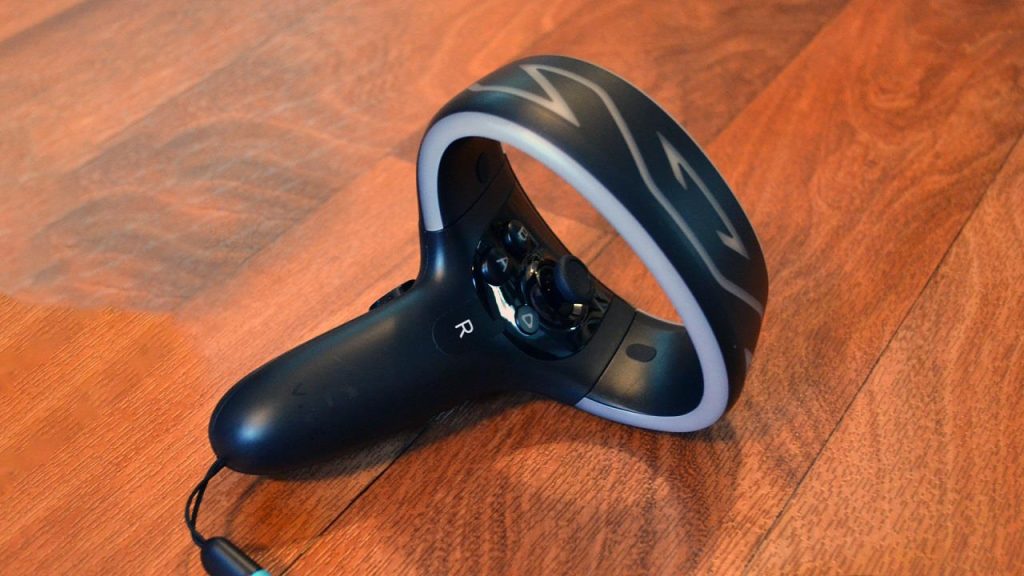
Powered by two AA batteries, the Cosmos controllers are bulky and lack a comfortable center of gravity, making them the least comfortable in their class compared to the Oculus Touch and Index controllers, although they are vastly superior to the Vive Wand.
The controllers track well (although not without the issues described above), and the six-camera tracking coverage seems to be comparable to the Rift S and a clear step up from the two-camera tracking system used in Windows VR headsets. However, they do seem to have a bit more latency compared to the Rift S controllers, but it’s not as critical. We were able to play Beat Saber on the Expert+ without any problems.
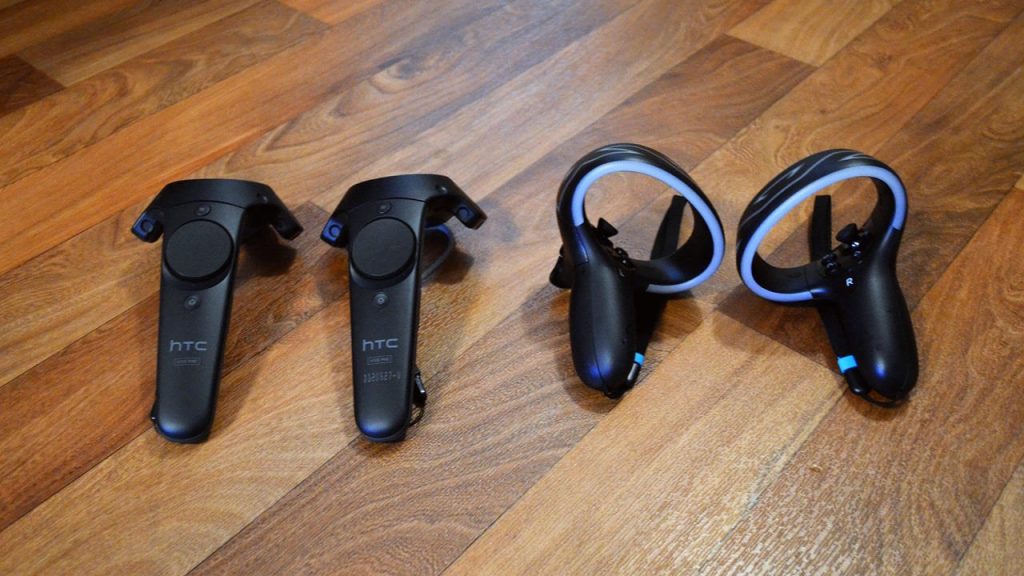
The controllers have the expected dead zones very close to the headset, but the system works around this problem gracefully by locking the controller in place until it can be restored. We were able to play games like The Lab’s “Longbow” without any problems, even with the string right up to the cheek. Depending on the specific game, it can sometimes be problematic if the controllers are kept very close to the headset for an extended period of time, but this is typical of any inside-out tracking system.
Vive Cosmos accessories.
HTC has announced plans to release a replacement bezel accessory for Cosmos in early 2020 that will empower it with SteamVR tracking capabilities. We haven’t had a chance to test it yet, though it’s expected to cost around $200 and require separate controllers.
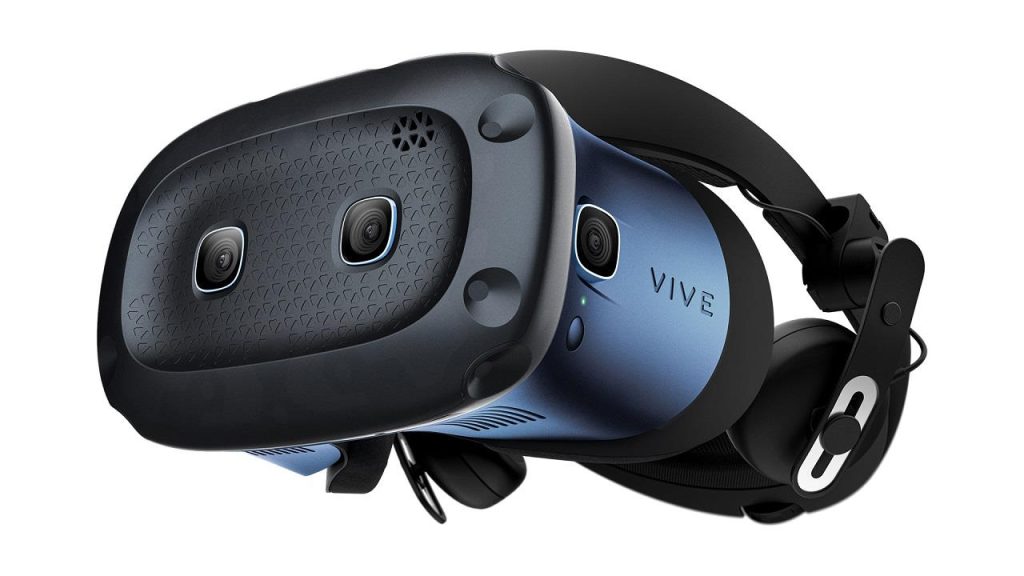
Cosmos will also be compatible with the Vive Wireless Adapter via an optional $50 addon, which is expected to go on sale later this month. We haven’t had a chance to test it yet.
Vive Cosmos software.
In terms of software and experience, HTC is trying to create its own ecosystem and make it easier for the end user to interact with both the Viveport store and the “Vive Reality System”. Unfortunately, Cosmos is still tied to Valve because Cosmos is still a SteamVR headset.
And while that’s a big plus for anyone who’s already tapped into the SteamVR ecosystem, it complicates HTC’s efforts to keep Cosmos simple and user-friendly.
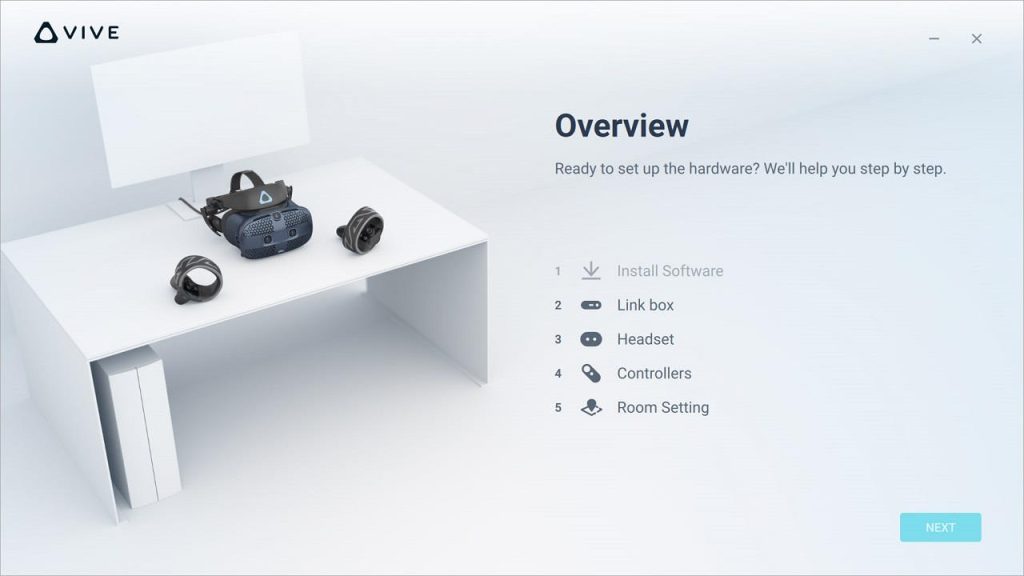
The Vive setup software looks modern and easy to use, but it doesn’t explicitly mention to new users the connection between Cosmos/Vive and SteamVR, despite the fact that SteamVR houses a lot of important settings (e.g. audio configuration, supersampling, etc). So, as convenient as the Cosmos software is, it still can’t get rid of the complexities of being initially paired with SteamVR.
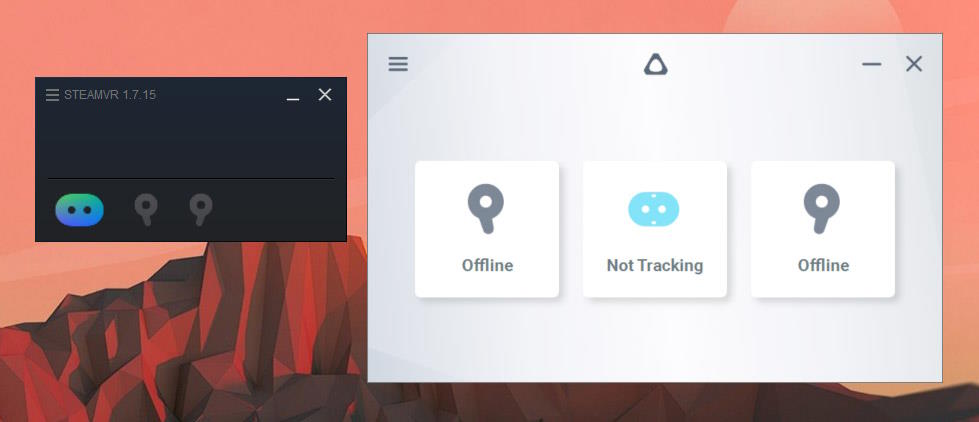
Content for Vive Cosmos.
This past close relationship between Steam and Vive is even more confusing for new users when it comes to content. While Steam offers the largest and best gaming content library for a headset, HTC directs users straight to their Viveport VR app store. Central to Viveport is Viveport Infinity, the company’s gaming service, which offers access to much of the Viveport library on a monthly subscription basis. And while Viveport Infinity is a good service with sometimes interesting content, it nonetheless offers new users piles of their own gaming junk instead of introducing them to the best VR games on Steam.
The Vive Reality System, which should be the basis of the user experience in virtual reality, at the time of launch is nothing more than a control panel and a “home” space in the headset. The “lens,” as the control panel is called here, looks nice and lets you browse your library of games and applications and launch new games, but that’s pretty much all it can do.

HTC has promised that the Vive Reality System will include much more, such as social features and social spaces. But all of that is apparently still on the horizon, leaving Steam as key features like friend lists, social spaces, text and voice chat, and multiplayer for now.
Vive Cosmos protection system.
Here’s where HTC really made an improvement over SteamVR, and that’s with the room-scale Cosmos setup. Cosmos takes a similar approach to the Rift S when it comes to drawing the edge of the playspace: using the pass-through camera, you point the controller at the ground and actually draw the edge of the playspace available. This is a protective feature that appears as a grid when you get close to it to prevent you from crashing into something in the real world. It’s a quick and easy approach, and even Index hasn’t caught up with it yet.
Summary about Vive Cosmos.
Despite a small sweet spot and questionable build quality in places, the Vive Cosmos can be a decent headset if you find it comfortable. But even so, unfortunately, it does not look like a price of $ 700 when considered in the context of competition.
While the Cosmos wins a few points here and there (like a wider field of view and better sound), the Rift S offers an overall better experience and is $300 cheaper. On the other hand, while the Index costs $300 more than the Cosmos, it does a lot more to justify that premium price: top-notch tracking, incredible sound, high build quality, better ergonomics, and overall much better optics. And if you’re among those early adopters who already own base stations (which makes the Index only $50 more expensive) and are choosing between Cosmos and Index, then there’s no doubt you should buy the Index.
All things considered, it’s hard to imagine that the Cosmos can be truly competitive with any of its main rivals unless the price drops to the $400 mark of the Rift S, but that’s unlikely to happen anytime soon.

